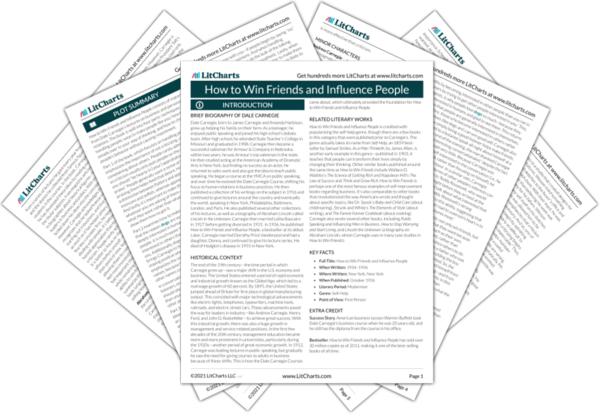Abraham Lincoln was the 16th president of the United States, serving from 1861 to 1865, known especially for his leadership during the American Civil War. Carnegie is deeply interested in Lincoln, considering him one of the greatest leaders of all time. He even wrote a biography of the president, and many case studies in the book are taken from Lincoln’s life. Carnegie describes how as a young lawyer, Lincoln openly attacked his opponents in letters published in a newspaper, which almost led Lincoln to fight in a duel. Afterwards, Lincoln realized how unproductive this criticism was, and he never wrote an insulting letter or publicly ridiculed anyone ever again. He acknowledged one of Carnegie’s major principles—that criticism is often futile. Lincoln often stated that “a drop of honey catches more flies than a gallon of gall,” suggesting positive appreciation is more useful in an argument than antagonism.
